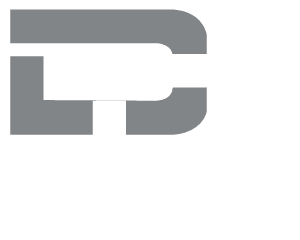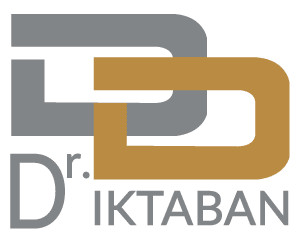What is Breast Reduction?
Breast reduction is sometimes called reduction mammaplasty and its goal is to reduce the size of the breasts through surgical excision. The result is breasts that are more proportional to your body and comfortable from day to day, which can improve both physical and emotional symptoms. Many times, a breast lift is performed in tandem with a breast reduction in order to remove excess skin and restore the breasts to a more upright position.
Breast Reduction Candidates
Women who benefit most from a breast reduction are those who
have breasts that are overly large and disproportional to the rest of their
body. Many times, breast reduction candidates experience pain and discomfort in
areas like the neck, back, or shoulders from carrying the extra weight. This
can sometimes come with health concerns like poor posture, chronic pain, skin
problems from chafing, sedentary lifestyle, and even trouble breathing.
In order to get the best results out of a breast reduction procedure, you should be at a place in life where your breasts will not continue to change because of factors like pregnancy or hormone changes. You should also be healthy enough to undergo an invasive surgery.
What Happens During Breast Reduction?
Breast reduction is performed under general anesthesia at
our in-house, certified surgical facility. The procedure begins with a
predetermined incision, which can include a combination of incisions around the
areolae, down to the breast crease, or within the inframammary fold. Sometimes,
liposuction can be enough to reduce the size of the breasts on its own, but
most often some surgical techniques are required. This means that excess fat
and skin are removed, and a breast lift may be performed to restore the breasts
to a more upright position. Once your ideal breast size is achieved, your
incisions are closed and made ready for recovery.
Results and Recovery
Breast reduction recovery can take several weeks in total,
but you should count on taking at least one week away from work and regular
activities. During this time, you should make sure to rest and avoid strenuous
activities and lifting your arms over your head. You can expect some discomfort
which can be managed with prescribed medications. It can take a few weeks before
most swelling subsides and you feel comfortable returning to light activities.
After your full recovery, you can enjoy easier exercise, better-fitting
clothing, and an overall improvement in your comfort and mobility.
Testimonials
Dr. D was kind, efficient, professional, understanding and allowed me to give myself a gift that will last for the rest of my life.- Meg”
Read More
Schedule a Consultation
Breast reduction can be a life-changing procedure for the many women looking to improve their lifestyle and confidence. To learn more about your options for breast surgery and how Dr. Diktaban can help, contact our Manhattan office by calling or filling out our online form.
Frequently Asked Questions
Does insurance pay for breast reduction?
Because it can have medical benefits, breast reduction is one of the rare plastic surgery procedures that is sometimes covered by major insurance providers. However, this can vary from policy to policy, so we encourage each patient to check with their representatives to discuss their options ahead of their consultation.
Can I breastfeed after breast reduction?
Having a breast reduction does not inherently mean that you won’t be able to breastfeed. Although getting pregnant after a breast reduction procedure can negatively affect your results, it’s important to discuss your future plans for breastfeeding with Dr. Diktaban during your consultation. That way, Dr. Diktaban can opt for an incision pattern that has a lesser chance of disrupting your breastfeeding ability.
What's the difference between a breast lift and breast reduction?
Breast reduction aims to reduce the size of the breasts through surgical excision while a breast lift aims to rejuvenate sagging breasts and lift them to a more youthful position. Many women benefit from a combination procedure of these two options since it’s common for women with overly-large breasts to also have excess skin left over. A breast lift can also reposition the nipples and areolae if they point downward.
Can breast grow back after reduction?
The breasts can increase in size because of hormonal influences and increase in bodily weight.
Can you drink alcohol after breast reduction?
You can drink alcohol after your doctor gives you permission which can be from 10-14 days after surgery.
Do you lose feeling in your nipples after breast reduction?
Loss of nipple sensation is possible but not in themajority of cases.
Do you lose weight after breast reduction?
You look like you lost more weight than you actually lose.
How do I know if I need a breast reduction?
Your plastic surgeon will be able to advise you as to the need for a breast reduction.
How long does it take for swelling to go down after breast reduction?
Most of the swelling resolves within the first few weeks after your procedure. The final result takes 3-6 months.
When can I wear a normal bra after breast reduction?
Most patients usually wear a sports bra for a few weeks. You can then transition to an underwire bra with your surgeons permission.
Does weight gain increase breast size?
Weight gain can effect the breasts too. It depends on your bodys chemistry.
Has anyone had a second breast reduction?
Secondary breast procedures can be done when the breasts increase size due to hormonal influences and weight gain.
How do you know when you need a breast reduction?
Your plastic surgeon will be able to advise you as to the need for a breast reduction.
How is the recovery from breast reduction?
You expect some soreness after the breast reduction surgery. Some patients might experience pain after the operation.
How long do stitches stay in after breast reduction?
Most of the time absorbable sutures are used to close the incisions which eliminates any suture removal.
How long does it take breast reduction to heal?
In general, it takes 3-6 months for the breasts to heal. The scars might require more time to monitor the healing.
How painful is a breast reduction?
You expect some soreness after the breast reduction surgery. Some patients might experience pain after the operation.
Is it OK to wear a sports bra after breast reduction?
A sports bra is a common garment to be worn after surgery as recommended by plastic surgeons.
Is it worth getting a breast reduction?
Most patients are happy that they underwent the breast reduction operation. The neck shoulder and back pain issues are resolved. They have less skin rashes. They are more comfortable in their clothes. And they are able to more comfortablyengage in athletic activities.


)
)
)
)
